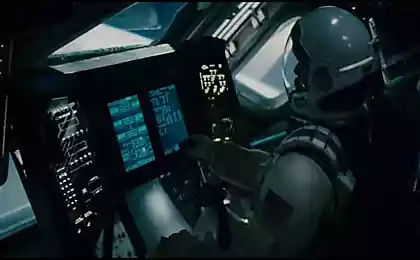443
New technology will allow to restore a damaged retina
Six million nine hundred forty nine thousand five hundred eleven
The retina is an extremely thin inner shell of a human eye which is responsible for the perception of the image and has sensitivity to light. As a result of some diseases of the retina can be damaged. And finally, scientists figured out how to restore the retina of a person with the help of nanotechnology.
A promising study by Israeli scientists suggests that artificially created light-sensitive film will be able to replace part of a damaged retina. This film is able to absorb light and stimulate neurons without the need to connect to any external power source.
At this time, the film was tested only on the retina, taken from the embryos of Chicks, but the researchers hope that in the near future they will be able to test its technology on volunteers-people.
Eighty nine million six hundred fifty one
The new branch of science that deals with these researches, has been called "optogenetics". Optogenetics is a research field stimulate neurons and control over them. This area of science explores not only the ability to see, but also affects gene therapy, brain mapping, mind control, reduction of sensitivity to pain, treatment of neurological disorders, such as epilepsy and Parkinson's disease, and much more.
First the researchers sought to find a way to return the eyesight of their patients. They combined semiconductor nanorods and carbon nanotubes in one film, resulting in a system with the ability to stimulate neurons to be sensitive to light. Two weeks after the start of the experiment was the experimental proof that this method of recovery of the retina is really effective. At least on the retina of embryonic Chicks.
Thirty six million fifty four thousand eighty seven
Up to this point, the most part of technologies of restoration of vision were based on photoconductive silicon chips implanted in eyes of patients, while connecting to external power sources. Such systems suffer from long term stability issues, as well as from the low resolution image.
If the technology will be effective for the treatment of damaged human retina, it will apply to tens of millions of people who are waiting for such treatment around the world. In addition, this technology could open new horizons in the treatment of blindness.
A study of Israeli scientists has created a furore in the scientific world. At the moment the results are studied by the employees from various scientific organizations around the world. Document research by Israeli scientists was first published in the journal Nano Letters.
Source: hi-news.ru
The retina is an extremely thin inner shell of a human eye which is responsible for the perception of the image and has sensitivity to light. As a result of some diseases of the retina can be damaged. And finally, scientists figured out how to restore the retina of a person with the help of nanotechnology.
A promising study by Israeli scientists suggests that artificially created light-sensitive film will be able to replace part of a damaged retina. This film is able to absorb light and stimulate neurons without the need to connect to any external power source.
At this time, the film was tested only on the retina, taken from the embryos of Chicks, but the researchers hope that in the near future they will be able to test its technology on volunteers-people.
Eighty nine million six hundred fifty one
The new branch of science that deals with these researches, has been called "optogenetics". Optogenetics is a research field stimulate neurons and control over them. This area of science explores not only the ability to see, but also affects gene therapy, brain mapping, mind control, reduction of sensitivity to pain, treatment of neurological disorders, such as epilepsy and Parkinson's disease, and much more.
First the researchers sought to find a way to return the eyesight of their patients. They combined semiconductor nanorods and carbon nanotubes in one film, resulting in a system with the ability to stimulate neurons to be sensitive to light. Two weeks after the start of the experiment was the experimental proof that this method of recovery of the retina is really effective. At least on the retina of embryonic Chicks.
Thirty six million fifty four thousand eighty seven
Up to this point, the most part of technologies of restoration of vision were based on photoconductive silicon chips implanted in eyes of patients, while connecting to external power sources. Such systems suffer from long term stability issues, as well as from the low resolution image.
If the technology will be effective for the treatment of damaged human retina, it will apply to tens of millions of people who are waiting for such treatment around the world. In addition, this technology could open new horizons in the treatment of blindness.
A study of Israeli scientists has created a furore in the scientific world. At the moment the results are studied by the employees from various scientific organizations around the world. Document research by Israeli scientists was first published in the journal Nano Letters.
Source: hi-news.ru























